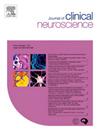Types of stent retrievers used in mechanical thrombectomy for acute ischaemic stroke: A scoping review
IF 1.8
4区 医学
Q3 CLINICAL NEUROLOGY
引用次数: 0
Abstract
Mechanical thrombectomy using stent retrievers is the standard endovascular treatment for acute ischaemic stroke due to large vessel occlusion. With the rapid evolution in device design, this scoping review aims to map the current landscape of stent retriever types used in clinical practice, as well as their application across different sites of vessel occlusion. A comprehensive literature search was conducted using MEDLINE, Embase, and the Cochrane Central Register of Controlled Trials to identify primary studies reporting on the safety and efficacy of stent retrievers in mechanical thrombectomy for acute stroke. After screening and data extraction by two independent reviewers, 133 studies were included, encompassing 22 distinct stent retriever devices. Frequencies of thrombectomy procedures were analysed according to device type and occlusion location. The Solitaire and Trevo devices accounted for the majority of cases (57 %), with the most commonly treated occlusion sites being the M1 segment of the middle cerebral artery and the internal carotid artery (51 % and 19 %, respectively). In contrast, anterior cerebral artery and M3 or more distal occlusions were underrepresented, each comprising only 1 % of the data. This review highlights a strong evidence base for conventional stent retrievers in large vessel occlusions, particularly M1, while also revealing a significant gap in knowledge regarding newer generation stent retrievers and their use in distal medium vessel occlusions. Further research is needed to evaluate device safety and effectiveness in these smaller, more challenging vessels.
用于急性缺血性卒中机械取栓的支架回收器的类型:范围回顾
机械取栓支架是大血管闭塞引起的急性缺血性中风的标准血管内治疗方法。随着设备设计的快速发展,本综述旨在绘制当前临床实践中使用的支架回收器类型的景观,以及它们在不同血管闭塞部位的应用。我们使用MEDLINE、Embase和Cochrane中央对照试验登记系统进行了全面的文献检索,以确定关于支架回收器在急性卒中机械取栓术中的安全性和有效性的初步研究。经过两名独立审稿人的筛选和数据提取,纳入133项研究,包括22种不同的支架回收装置。根据设备类型和闭塞部位分析取栓次数。Solitaire和Trevo装置占大多数病例(57%),最常治疗的闭塞部位是大脑中动脉M1段和颈内动脉(分别为51%和19%)。相比之下,大脑前动脉和M3或更多远端闭塞未被充分代表,每个仅占数据的1%。这篇综述强调了传统支架回收器在大血管闭塞中的强有力的证据基础,特别是M1,同时也揭示了关于新一代支架回收器及其在远端中血管闭塞中的应用的重大知识差距。在这些更小、更具挑战性的容器中,需要进一步的研究来评估设备的安全性和有效性。
本文章由计算机程序翻译,如有差异,请以英文原文为准。
求助全文
约1分钟内获得全文
求助全文
来源期刊

Journal of Clinical Neuroscience
医学-临床神经学
CiteScore
4.50
自引率
0.00%
发文量
402
审稿时长
40 days
期刊介绍:
This International journal, Journal of Clinical Neuroscience, publishes articles on clinical neurosurgery and neurology and the related neurosciences such as neuro-pathology, neuro-radiology, neuro-ophthalmology and neuro-physiology.
The journal has a broad International perspective, and emphasises the advances occurring in Asia, the Pacific Rim region, Europe and North America. The Journal acts as a focus for publication of major clinical and laboratory research, as well as publishing solicited manuscripts on specific subjects from experts, case reports and other information of interest to clinicians working in the clinical neurosciences.
 求助内容:
求助内容: 应助结果提醒方式:
应助结果提醒方式:


